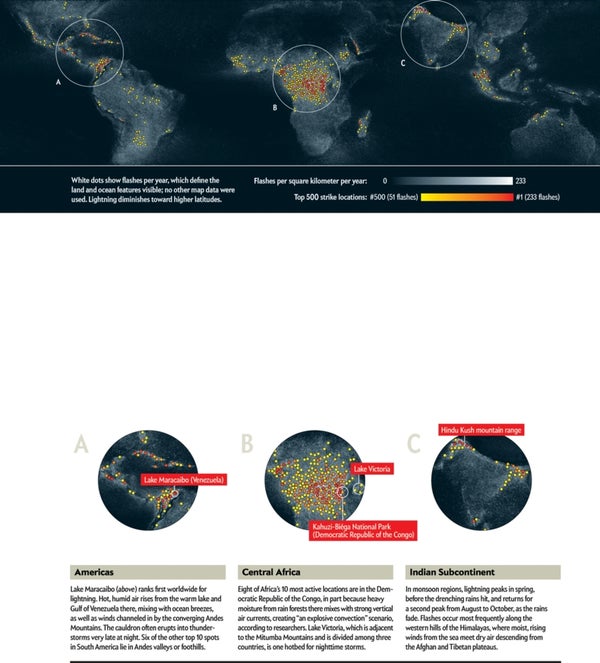On supporting science journalism
If you're enjoying this article, consider supporting our award-winning journalism by subscribing. By purchasing a subscription you are helping to ensure the future of impactful stories about the discoveries and ideas shaping our world today.
Lightning flashes above Lake Maracaibo in Venezuela more than anywhere else on earth and does so for a stunning 297 days of the year. Second place goes to Kahuzi-Biéga National Park in the Democratic Republic of the Congo. A new study of satellite data spanning 16 years shows that cloud-to-ground lightning and intracloud lightning occur most frequently over complex terrain—notably the foothills of rugged mountain regions, especially if a big, warm lake lies nearby (insets below). Ironically, the leading U.S. spot is not rugged, but a flat corner of the Everglades near Orangetree, Fla. Africa is home to the most hotspots—283 of the top 500—followed by Asia (with 87), South America, North America and Australia (colored dots on main map). Above land, thunderstorms are most prevalent during the afternoon; fewer form over the oceans, but they tend to flare up at night.

SOURCE: “WHERE ARE THE LIGHTNING HOTSPOTS ON EARTH?” BY RACHEL I. ALBRECHT ET AL., IN BULLETIN OF THE AMERICAN METEOROLOGICAL SOCIETY (IN PRESS); Graphic by Pitch Interactive

